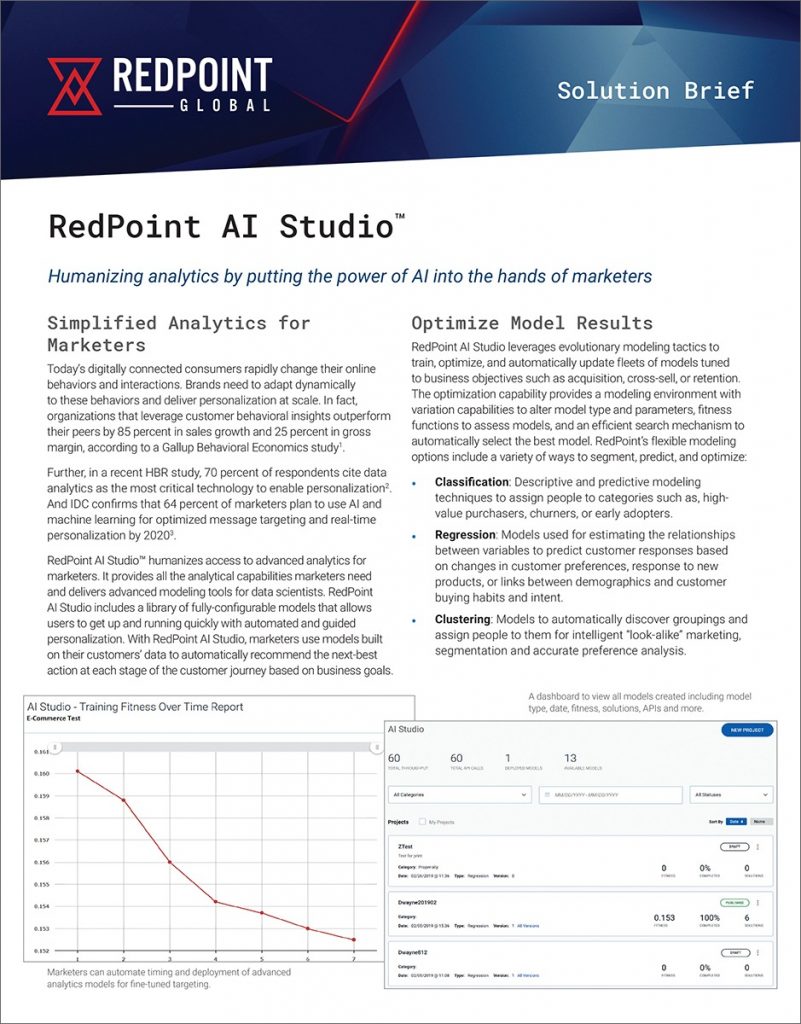 Editor’s Note: This is the second blog in a two-part series exploring the importance of continual data infusion, orchestration, and a closed-loop data cycle over the complete customer data lifecycle. Part 1 examined analytics and data models as use cases for data orchestration.
Editor’s Note: This is the second blog in a two-part series exploring the importance of continual data infusion, orchestration, and a closed-loop data cycle over the complete customer data lifecycle. Part 1 examined analytics and data models as use cases for data orchestration.
A hyper-personalized customer experience at scale is the holy grail for retail and brand marketers who aim to keep pace with today’s always-on consumer throughout all digital and physical touchpoints. To handle customer journey complexity, marketers must deploy an engagement strategy that continuously delivers the right offer in the context and cadence of that journey. This is the core job of intelligent orchestration.
One obvious place to start is with a next-best action for a customer, the “tip of the spear” in orchestration, which happens at the moment of engagement with a single customer through a specific channel. But a single action – an offer or an ad, a piece of content, or a human voice – is just one step in an orchestrated journey. Behind the scenes, orchestration – like the customer journey itself – is a process, not a destination. Recognizing orchestration as an ongoing process underscores the importance of orchestrating the customer data along with the customer journey. Data orchestration means continually managing the customer data stream – driving new decisions, retraining and retesting machine learning models – while also recognizing an actual customer at the center, demanding both relevance and delight.
Playing the Right Note
The orchestration engine must continuously adapt and recalculate audience, channel, and action. Whether reaching out or reacting to the customer, the engine is choosing content, measuring response, and interacting in accordance with multiple small decisions about a customer during a precise moment of their journey.
The importance of feedback is illustrated with an examination of the seemingly infinite permutations of a set of actions in a customer journey. Did a customer open an email? How did the customer respond? How soon after opening the email did the customer visit a physical location? Did they post a photo on Instagram? Orchestration dictates the next note for a brand to play to ensure that every interaction is “in tune” with the chords the customer plays throughout a buying journey and, ultimately, throughout the entire customer lifecycle.
Feeding every piece of customer response data back into the orchestration engine in real time ensures that the brand stays in sync with the connected consumer. With the right data at the right time and in the right place, marketers eliminate guesswork that creeps in when they’re working with stale data or old data models built to answer questions that may suddenly be irrelevant to a customer’s current experience.
Orchestration is a Stool with Many Legs
Retraining machine learning models to stay in tune with a customer is a necessary but not entirely sufficient part of the closed-loop data cycle. The marketers’ intent or preference is another component that requires a continual data refresh. Real time product availability, for example, will also determine engagement – such as a product recommendation model that operates at the intersection of what a customer desires, what a marketer intends, and what a brand can offer. Dynamic open time email offers present another example, where offers are made – and changed in real time – depending on whether a predetermined threshold is met.
Machine learning models represent the intersection between customer desires, marketer intent, and organizational constraints. Each requires continuous retraining to make sure the right data is in place to keep pace with a dynamic customer journey, and to ensure that a journey is not derailed by ignoring or devaluing one part of the intersection.
The combination of desires, intent, and constraints offers a broad canvas for experimentation. Because the customer journey is open-ended, permutations on the journey may seem infinite (or at least daunting). Selecting a short, well-defined path for testing and optimization allows marketers to manage a specific outcome. Feeding results back into the data orchestration engine to test a new model’s effectiveness can then inform a decision whether to tweak or reboot a model to explore a new path.
Customer Preferences Take Center Stage
Another consideration is customer preferences for how their data is collected, stored, and used in accordance with regulations such as GDPR and CCPA. A consumer’s right to be forgotten, for instance, requires marketers to act in accordance with a customer’s opt-in and opt-out preferences throughout the customer lifecycle.
A customer might opt-out of marketing emails, but welcome marketing to them on the website – or vice-versa. Customer preferences that govern how and when a brand is allowed to engage must also be considered as part of the intersection between the customer, the marketer, and organizational constraints.
Intelligent orchestration is far more complex than one machine learning model generating a next-best action depending on where a customer appears in a dynamic customer journey, or depending on the previous interaction with the customer. It is a continual, multi-layered, and bi-directional process that requires continuous data infusion and model retraining to ensure that the intersection of the customer, the marketer, and organizational constraints is always free of any obstacle in the way of engaging with the customer with a hyper-personalized experience.
RELATED ARTICLES
No Data Left Behind: Analytics, Orchestration, and Making Data Work for You
What is Data Lineage and Why is it Important
Why Data Veracity is the Foundation for a Personalized Customer Experience
Be in-the-know with all the latest customer engagement, data management, and Redpoint Global news by following us on LinkedIn, Twitter, and Facebook.


